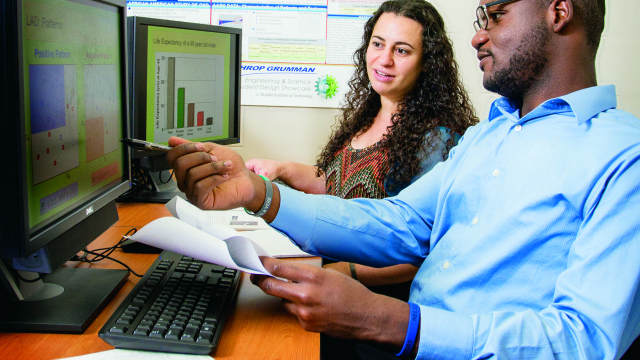Doing the Math in Cancer Research
Mathematical Tools May Help to Identify Cancer Drug Resistance in Individual Patients
For Munevver Mine Subasi, associate professor in Florida Tech’s department of mathematical sciences, involvement in a current research project on breast cancer has both a personal and a professional connection.
“I was motivated to get involved in breast cancer research during my post-graduate studies,” she said, noting an abundance of opportunity through several projects. “However, through observing the devastation of cancer in my own family and with close friends, I gained a better understanding about the impact of cancer research.”
Subasi counts a grandmother and a cousin as cancer survivors in her own family and saw two close friends lose their mothers to aggressive pancreatic and bone cancers, respectively, in recent years. With a background as a mathematician, Subasi didn’t set out with cancer research in mind as a destination along her career path but a curiosity for the causes of disease in humans led her to explore cancer biology.
She credits Gyan Bhanot at Rutgers’ BioMaPS Institute as having helped her bridge the gap between mathematics and physical science. Subasi’s current project focuses on Tamoxifen, a drug taken orally in tablet form, which has had intermittent success in the treatment of Estrogen-positive (ER+) breast cancers. While in some cases, Tamoxifen has had tremendous results, making primary tumors disappear while preventing long-term metastasis; in others, the drug has proven less effective or does not work at all.
Through a rigorous analysis of microarray breast cancer data, Subasi aims to develop mathematical tools to identify Tamoxifen resistance in individual patients. “My research team focuses on gene-gene interactions to stratify breast cancer patients into subclasses of ER+ disease,” she explained. “And to identify the expression patterns on groups of genes, which are predictive of drug resistance within each subtype.”
While clinical, molecular and genetic differences among the many subtypes of breast cancer have been identified, to this point, researchers have had difficulty predicting drug resistance and the patients at greatest risk in each subtype. It is Subasi’s mathematical expertise that she hopes will lead to mitigating the erratic performance of Tamoxifen, to identify new gene targets and suggest alternative therapies, for the most beneficial outcome.
“The successful results of this research are expected to lead to the discovery of novel biological information, improving breast cancer risk management,” she said. “Risk stratification would directly help clinicians to identify the patients most likely to have early disease recurrence who might benefit from more aggressive therapy. The proposed research activities [could then] be extended to the analysis of other human cancers.”
–Jon Jordan
%CODE1DISCOVERYMAGVOL13%






